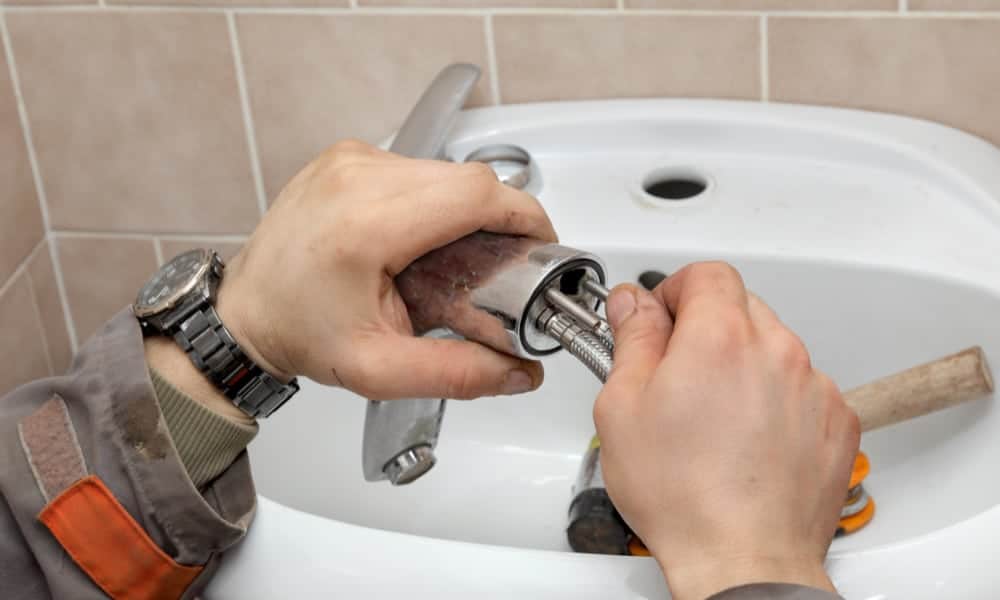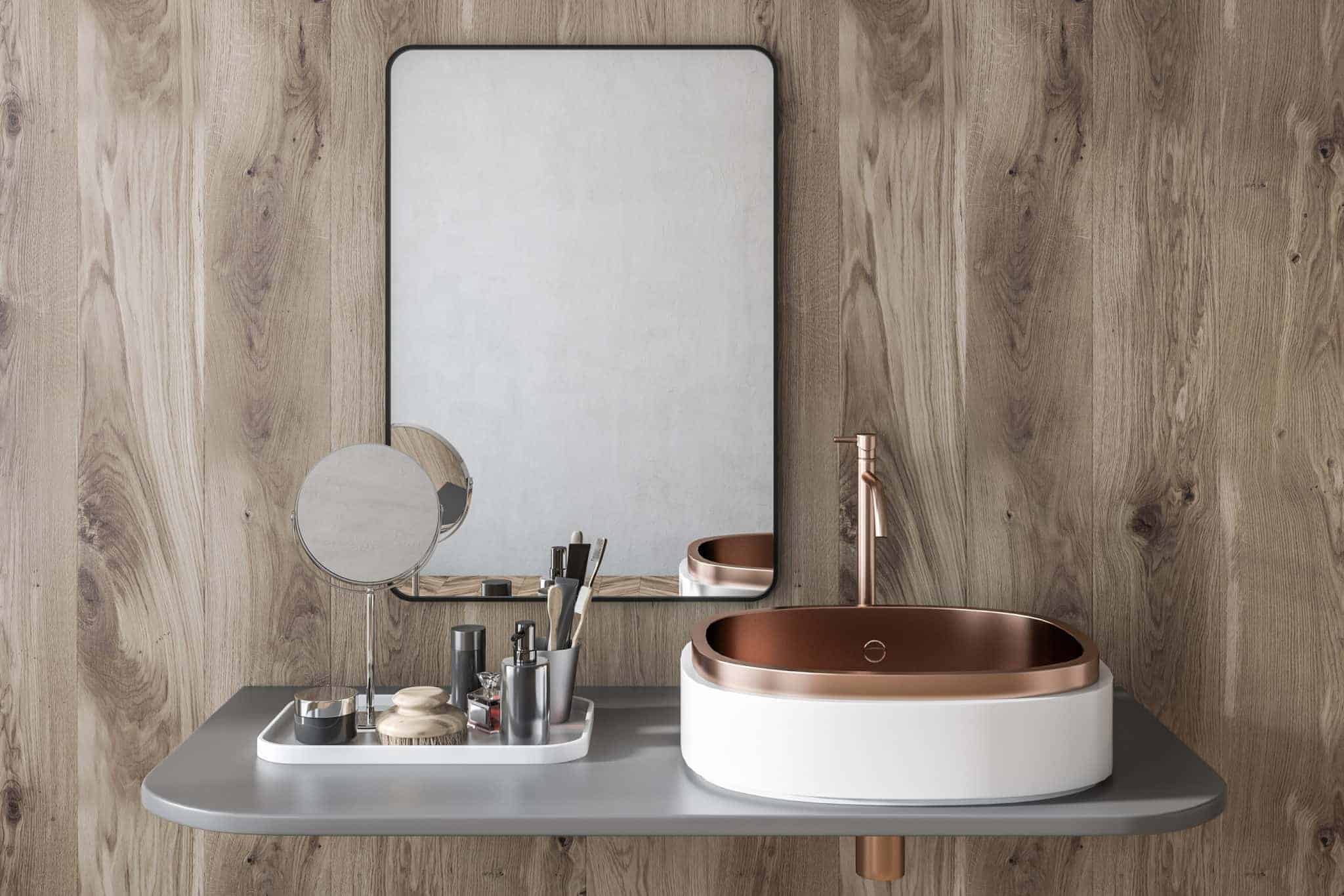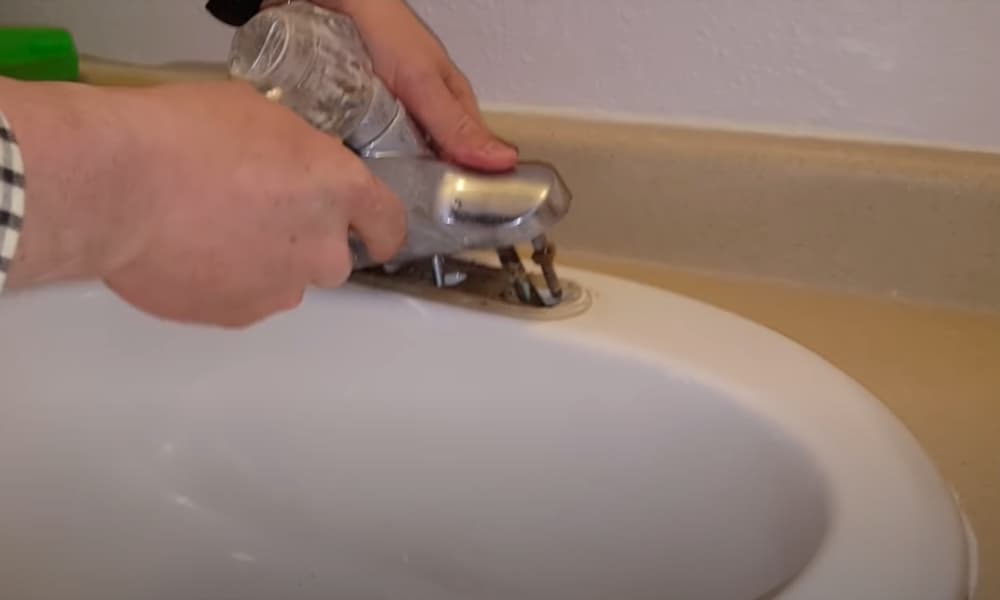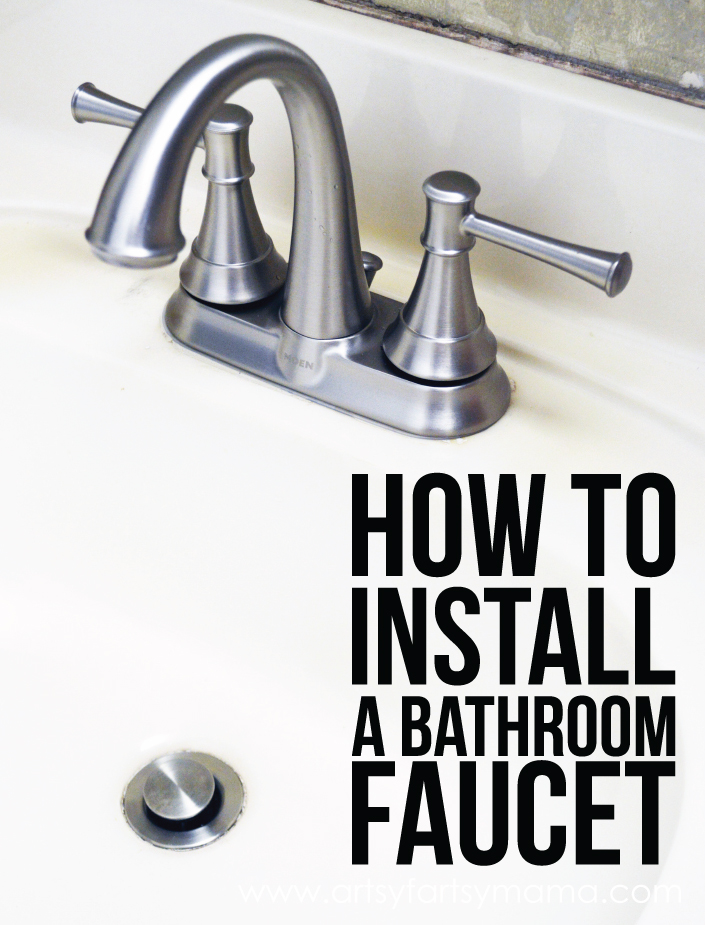Installing a new bathroom sink faucet can seem like a daunting task, but with the right tools and knowledge, it can be a straightforward and satisfying DIY project. Whether you're replacing an old faucet or installing a new one, this step-by-step guide will walk you through the process and ensure a successful installation.How to Install a Bathroom Sink Faucet
If you're replacing an old bathroom sink faucet, the first step is to turn off the water supply. This can usually be done by closing the shut-off valves located under the sink. Once the water is off, turn on the faucet to release any remaining water and then disconnect the supply lines. Next, remove the old faucet by unscrewing the mounting nuts that hold it in place. You may need a basin wrench to reach these nuts, especially if the faucet is located in a tight space. Once the old faucet is removed, clean the area and prepare for the new faucet installation.Replacing a Bathroom Sink Faucet
Before beginning the installation process, make sure you have all the necessary tools and materials. These may include a basin wrench, adjustable wrench, pliers, screwdriver, plumber's tape, and the new faucet with all the necessary components. Step 1: Place the rubber or plastic gasket onto the bottom of the faucet, and then insert the faucet into the mounting holes on top of the sink. Step 2: From under the sink, secure the faucet in place with the mounting nuts provided. Use a basin wrench to tighten the nuts, making sure the faucet is straight and level. Step 3: Connect the supply lines to the hot and cold water valves, using plumber's tape on the threads for a tight seal. Make sure the lines are not twisted or kinked and tighten the connections with an adjustable wrench. Step 4: Once the supply lines are connected, turn on the water supply and check for any leaks. If there are no leaks, turn on the faucet and let the water run for a few minutes to flush out any debris that may have been left in the lines. Step 5: Reconnect the drain pipe and P-trap to the sink, making sure all connections are secure and leak-free. Step 6: Give the faucet a final wipe down and enjoy your newly installed bathroom sink faucet!Step-by-Step Guide for Installing a New Bathroom Sink Faucet
Installing a bathroom sink faucet can be a satisfying DIY project for those with a bit of handyman experience. It not only saves money but also gives you a sense of accomplishment and a beautiful new addition to your bathroom. However, if you're not confident in your DIY skills, it's always best to hire a professional to ensure a successful installation.DIY Bathroom Sink Faucet Installation
Here's a list of tools and materials you will need for installing a new bathroom sink faucet:Tools and Materials Needed for Installing a New Bathroom Sink Faucet
When it comes to choosing a new bathroom sink faucet, there are a few things to consider:Tips for Choosing the Right Bathroom Sink Faucet
While installing a bathroom sink faucet is a fairly straightforward process, there are a few common mistakes that can lead to problems down the line. Here are some mistakes to avoid:Common Mistakes to Avoid When Installing a Bathroom Sink Faucet
If you're replacing an old bathroom sink faucet, the first step is to remove the old one. Here's how: Step 1: Turn off the water supply and open the faucet to release any remaining water. Step 2: Disconnect the supply lines from the hot and cold water valves using an adjustable wrench. Step 3: Using a basin wrench, loosen and remove the mounting nuts that hold the faucet in place. Step 4: Once the faucet is loose, remove it from the sink and clean the area in preparation for the new faucet installation.How to Remove an Old Bathroom Sink Faucet
Installing a bathroom sink faucet on a granite countertop requires a few extra steps to ensure a successful installation: Step 1: Measure the distance between the holes on the granite countertop to ensure the faucet will fit. Step 2: Use a diamond-tipped drill bit to create the holes for the faucet. Make sure to go slowly and use a constant water supply to prevent overheating. Step 3: Follow the steps for installing a new faucet as outlined above.Installing a Bathroom Sink Faucet on a Granite Countertop
While it can be tempting to save money and install a bathroom sink faucet yourself, there are a few benefits to hiring a professional:Professional vs. DIY Bathroom Sink Faucet Installation
Why Upgrade to a New Bathroom Sink Faucet?

Save Money and Water
 One of the main benefits of installing a new
bathroom sink faucet
is the potential cost savings. Older faucets can have leaks or drips that may seem insignificant, but can actually add up to a significant amount of wasted water over time. By upgrading to a new faucet, you can ensure that your water usage is more efficient, saving you money on your water bill. Additionally, newer faucets often come equipped with
water-saving features
such as aerators, which can further reduce water usage and save you even more money in the long run.
One of the main benefits of installing a new
bathroom sink faucet
is the potential cost savings. Older faucets can have leaks or drips that may seem insignificant, but can actually add up to a significant amount of wasted water over time. By upgrading to a new faucet, you can ensure that your water usage is more efficient, saving you money on your water bill. Additionally, newer faucets often come equipped with
water-saving features
such as aerators, which can further reduce water usage and save you even more money in the long run.
Enhance the Look and Functionality of Your Bathroom
 Another reason to install a new
bathroom sink faucet
is to improve the overall aesthetics and functionality of your bathroom. Faucets come in a variety of styles, finishes, and designs that can add a touch of elegance or modernity to your space. You can choose from traditional faucets with two handles, or more contemporary options with a single lever for both hot and cold water. By selecting a faucet that fits your personal style and the design of your bathroom, you can elevate the look and feel of the space.
Another reason to install a new
bathroom sink faucet
is to improve the overall aesthetics and functionality of your bathroom. Faucets come in a variety of styles, finishes, and designs that can add a touch of elegance or modernity to your space. You can choose from traditional faucets with two handles, or more contemporary options with a single lever for both hot and cold water. By selecting a faucet that fits your personal style and the design of your bathroom, you can elevate the look and feel of the space.
Upgrade to Better Quality
 If you have an older faucet, chances are it may not be as durable or efficient as newer models. By installing a new
bathroom sink faucet
, you can upgrade to a higher quality product that will last longer and require less maintenance. Look for faucets with
quality materials
such as brass or stainless steel, which are less prone to corrosion and will maintain their appearance over time. Additionally, newer faucets often come with
ceramic disc valves
, which are more durable and reliable than traditional rubber washers.
If you have an older faucet, chances are it may not be as durable or efficient as newer models. By installing a new
bathroom sink faucet
, you can upgrade to a higher quality product that will last longer and require less maintenance. Look for faucets with
quality materials
such as brass or stainless steel, which are less prone to corrosion and will maintain their appearance over time. Additionally, newer faucets often come with
ceramic disc valves
, which are more durable and reliable than traditional rubber washers.
Improve Hygiene and Sanitation
 A new
bathroom sink faucet
can also improve hygiene and sanitation in your bathroom. Older faucets may have build-up of bacteria or mold in hard-to-clean areas, which can pose a health risk. By upgrading to a new faucet, you can ensure that your bathroom is clean and free from potential contaminants. Look for faucets with
touchless technology
or single-handle designs, which can reduce the spread of germs and make cleaning easier.
A new
bathroom sink faucet
can also improve hygiene and sanitation in your bathroom. Older faucets may have build-up of bacteria or mold in hard-to-clean areas, which can pose a health risk. By upgrading to a new faucet, you can ensure that your bathroom is clean and free from potential contaminants. Look for faucets with
touchless technology
or single-handle designs, which can reduce the spread of germs and make cleaning easier.





















































































